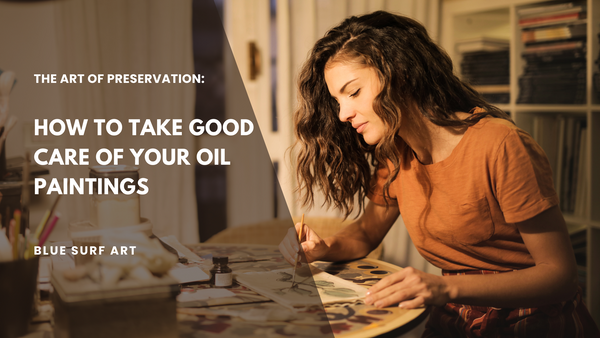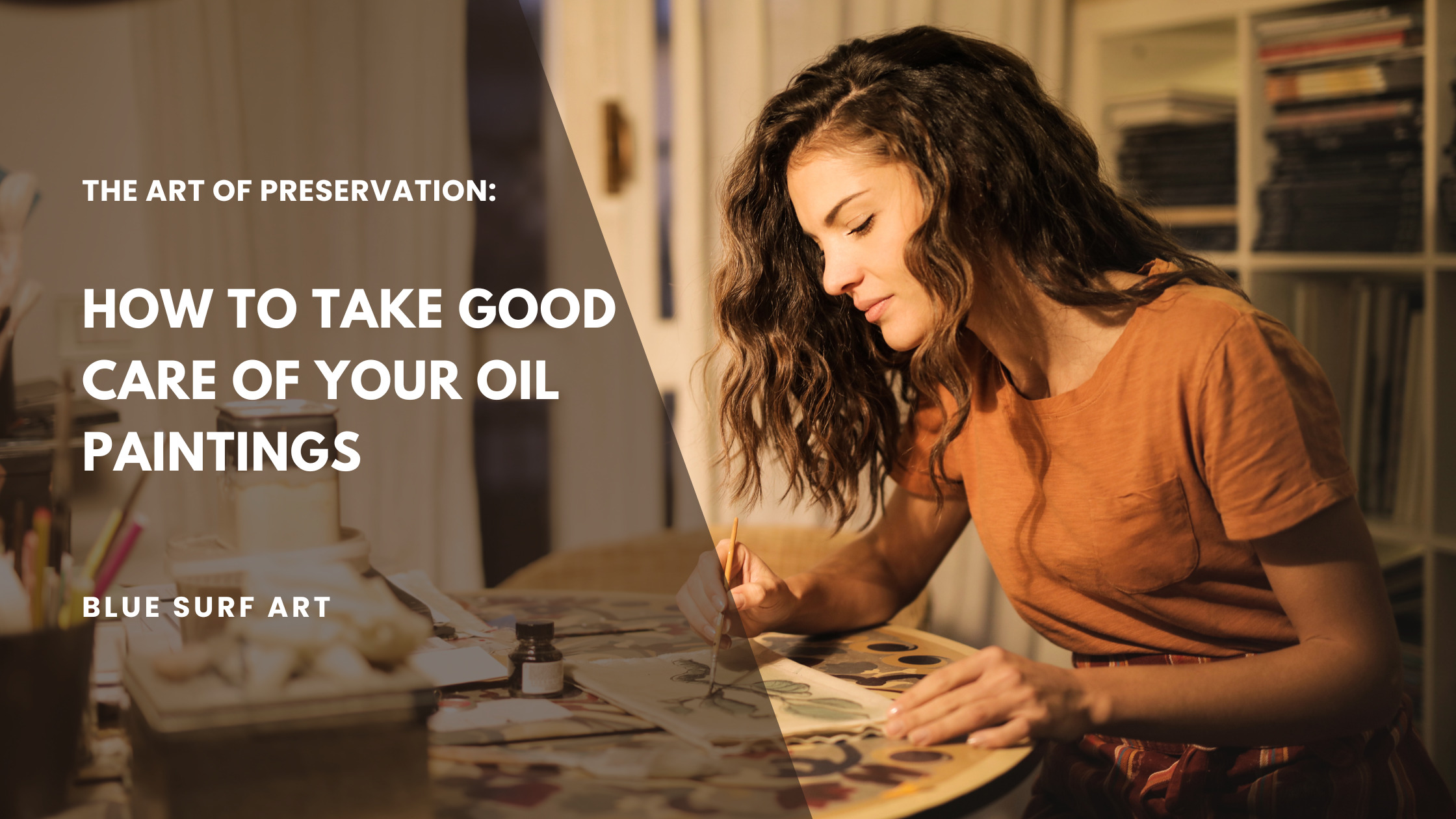The Art of Preservation: How to Take Good Care of Your Oil Paintings

Oil paintings are treasures that can last for centuries, captivating viewers with their vibrant colors and intricate textures. However, maintaining the integrity and beauty of these artworks requires careful attention and proper care. Whether you're an avid collector or you've inherited a precious family heirloom, understanding how to take care of oil paintings is essential. Here's a comprehensive guide to help you preserve these valuable pieces.
1) Optimal Environmental Conditions
- Temperature and Humidity: Maintain a stable environment with temperatures between 65-75°F (18-24°C) and humidity levels at 40-60%. Extreme fluctuations can cause the canvas to expand or contract, leading to cracking of the paint.
- Lighting: Avoid exposing oil paintings to direct sunlight, which can fade colors over time. Use LED lights with UV filters to minimize light damage, ensuring the illumination is soft and even.
2) Proper Handling and Display
- Framing: Use high-quality, acid-free materials for framing. Ensure the painting is properly mounted and that the frame provides adequate ventilation to prevent moisture buildup.
- Hanging: Hang paintings securely using two hooks, which distribute the weight evenly. Avoid placing paintings over fireplaces or radiators where heat and soot can accumulate.
- Handling: Always handle paintings with clean, dry hands or wear cotton gloves. When moving a painting, grasp it from the sides of the frame, never from the top or canvas.
3) Cleaning and Maintenance
- Dust Regularly: Gently dust the surface of the painting using a soft, dry artist’s brush (preferably a sable or soft synthetic). Brush lightly from the center outward in one direction.
- Surface Cleaning: For surface dirt or smudges, consult a professional conservator. Do-it-yourself cleaning methods can inadvertently damage the delicate layers of oil paint.
- Check for Signs of Damage: Regularly inspect your painting for any signs of damage such as cracking, flaking, or mold. Early detection can prevent more severe deterioration.
4. Dealing with Damage
- Professional Restoration: If a painting is damaged, it’s crucial to seek the expertise of a professional conservator. Restoration attempts without proper training can lead to further damage and devaluation of the artwork.
- Insurance: Consider insuring valuable paintings. Insurance can provide peace of mind and cover professional restoration costs in case of damage.
5. Long-Term Storage
- Environment: Store paintings in a climate-controlled environment. Avoid basements or attics where temperatures and humidity can fluctuate dramatically.
- Positioning: Store paintings vertically with padding between each artwork to avoid pressure marks. Cover paintings with a breathable cloth to protect against dust and grime.
- Avoid Wrapping in Plastic: Never wrap oil paintings in plastic as this can trap moisture and lead to mold growth. Use breathable materials like cloth or acid-free paper.
Conclusion
Caring for oil paintings is an art in itself, requiring patience, precision, and a proactive approach to conservation. By following these guidelines, you can ensure that your oil paintings remain in pristine condition for generations to come. Whether it’s a museum-worthy masterpiece or a cherished family piece, each painting deserves the best care to preserve its beauty and historical significance.

Share:
How to Safely Remove Stuck Tissue Paper from an Oil Painting
Framing Oil Paintings: Classic & Modern Options Guide